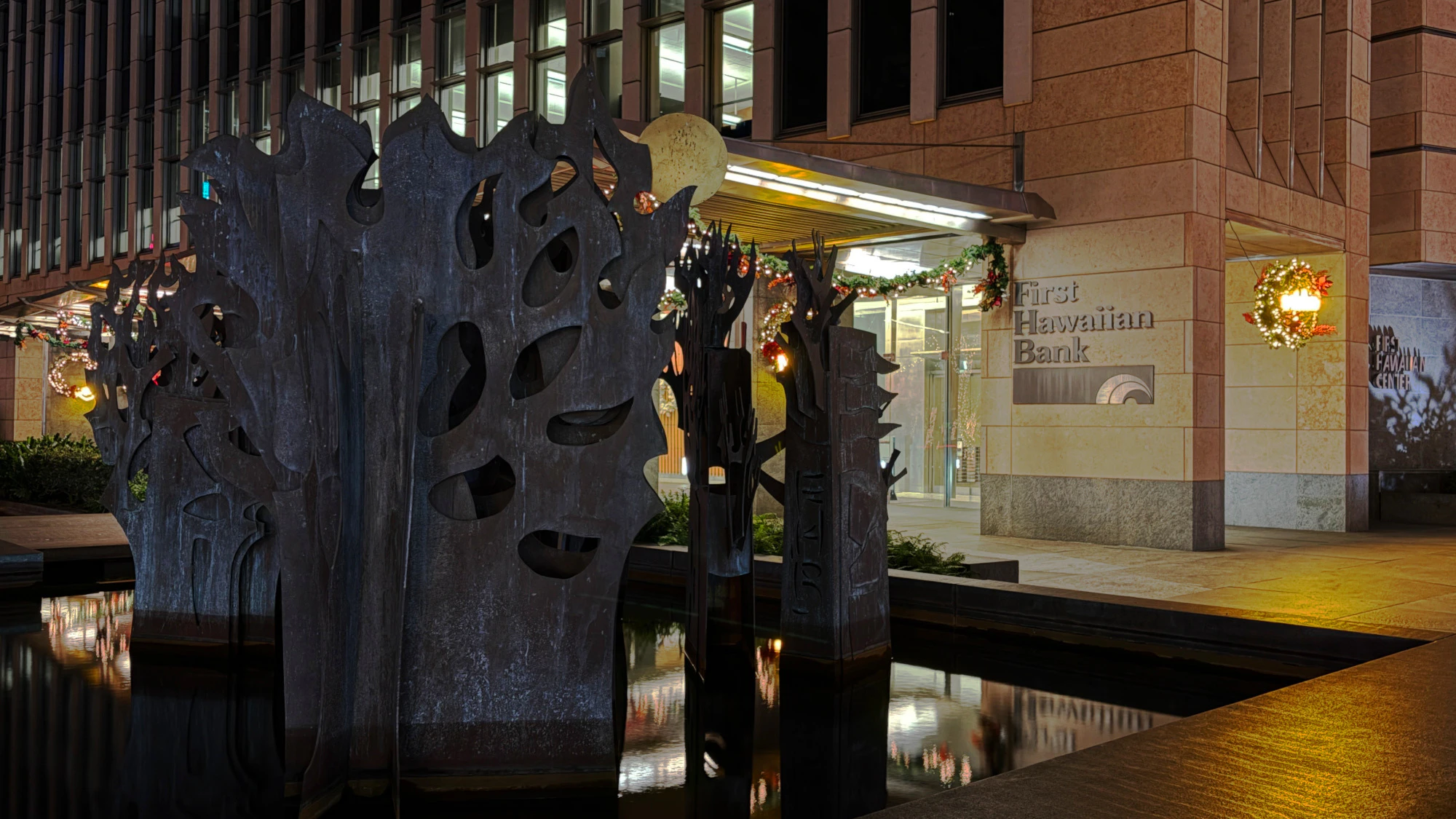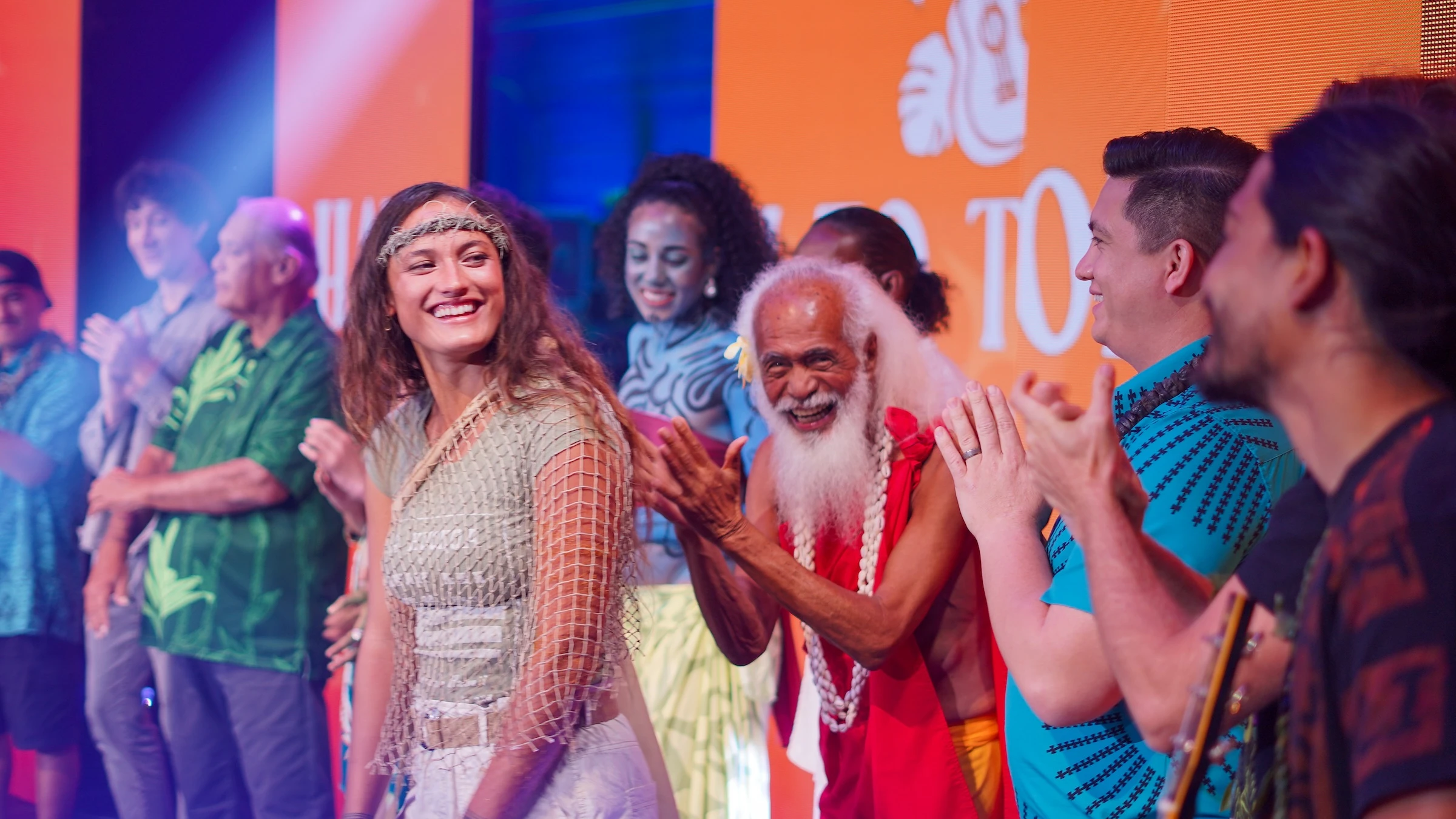Ala Moana Shopping Center is said to be the largest open-air mall in the world, but its beginnings were far humbler. Long before the plans were drawn and the foundation was laid, this flat, sandy area was once filled with loko i‘a (fishponds) and loko i‘a kalo (taro fields used to raise small fish). The ‘ili (land division) of Kālia ran from the ‘Ewa end of Ala Moana Center to what is now Halekūlani Hotel.
Within these wetlands, wildlife was abundant, and Hawaiian families lived and worked to care for the land and feed their people. They raised their children here, and served their ali‘i as was required, and lived out their years as a community of abundance.
In the 1920s, the landscape of Kālia changed drastically as the Ala Wai Canal was created. The marshes, the lo‘i kalo, and loko i‘a were filled in with the dredge from the canal project, leaving a foundation for future developers. Later, a daring idea of an expansive, two-level, open-air mall broke ground. In August 1959, Ala Moana opened its doors, and almost overnight, it reshaped Honolulu’s commercial landscape. Where Fort Street once bustled as the city’s premier shopping district, lined with department stores and filled with foot traffic, Ala Moana offered something new and modern. With its wide walkways, ample parking, and a design that encouraged strolling between open-air shops, the mall became the city’s new hub for commerce and social life.
The shopping mall grew steadily, adding new wings and anchor stores as Honolulu expanded around it. Soon, Ala Moana Center was recognized as an international destination, blending entertainment, everyday necessities, and luxury stores. Its stage in the center court became a place for hula shows, school performances, and community events, reminding shoppers that the center is also a gathering place.
But beneath the polished storefronts and bustling walkways lies a much older story—one that reaches back to the days when Kālia was nothing more than sand, wetlands, and fishponds. In those sands, generations of Hawaiians laid their loved ones to rest. Though the newspapers of the 1950s said nothing of such discoveries during construction, the uncovering of pre-contact burials in the immediate vicinity in recent years reminds us that Ala Moana was not built on empty ground.
Behind the scenes, often out of view of the customers, Ala Moana Shopping Center takes on another life entirely. Employees who have worked its halls day in and day out tell of shadows that do not belong to any living person, of whispers caught in the stillness, and of presences that refuse to let go of the space.
One former worker at Sears confessed that the stockroom was unbearably haunted. At first, she just saw glimpses of a small girl darting between racks where no child should have been. After a few weeks, sightings of this girl were constant, even early in the mornings before the store opened. Another person stated that he once saw a man gliding across the sales floor in the middle of the day. He emphasized gliding.
“As in, his body didn’t bounce like a normal person walking,” he said, “The dude literally floated across the floor because he had no feet!”
There were strange sounds, too. At night, it sounded like hangers scraping over the metal bars of the clothing racks when no one was nearby. Others claimed to hear heavy ladders being dragged across the tile floors. The most numerous complaints were strange footsteps. One person said they’d often hear steps behind them as if someone was following them. Another said they heard what sounded like dozens of people walking past, but the store was already closed and no one was there.
And then there are the stories from the loading docks, places few shoppers ever notice. One man remembers working late at night, running air conditioning conduits overhead along the Mauka side and through the service corridor near where the old Arby’s used to be. As they approached the service corridor, one man jumped down from the scissor lift to open the door. He struggled a bit and realized that it was locked tight, the knob refusing to turn.
He turned around and started walking back to the lift, calling out, “The door’s locked!”
Suddenly, the door swung open behind him. For a long moment, no one spoke. The four men stared at the open doorway, the echo of what had just happened leaving their skin cold. Two decades later, the memory still lingers, sharper than any dream.
Another construction worker shared his story about the area when Foodland used to be near the Post Office. They were working on renovations, and in the middle of the day, he saw a Hawaiian woman walking through the construction area. He yelled at her because she was barefoot and not wearing a hard hat. As he rushed to approach her, he said she just walked right through the wall.
The old-timers at Sears whispered that Ala Moana sits atop a portal, a crossing point for spirits. Although the center has changed dramatically over the years, some things, like hauntings and portals, neer go away. Maybe it was the sandy ground, once used for burials, or maybe something older still, tied to the waters and fishponds that once filled Kālia. Whatever the reason, the mall seems to hold open a door to the other side.
For the latest news of Hawai‘i, sign up here for our free Daily Edition newsletter!





